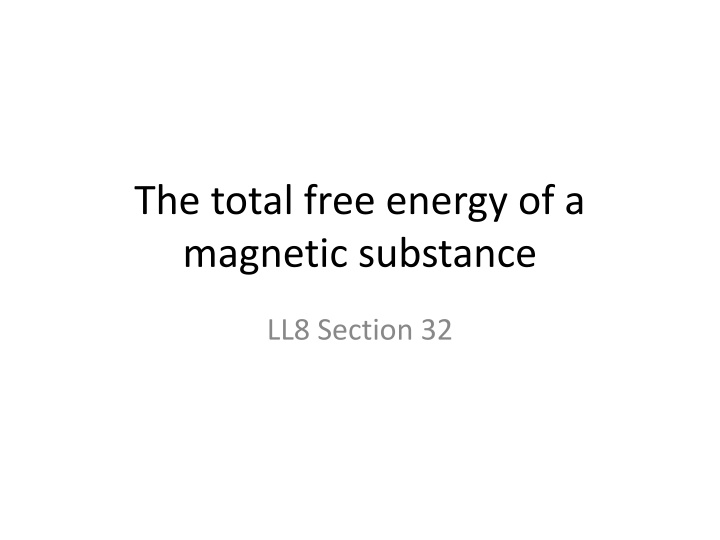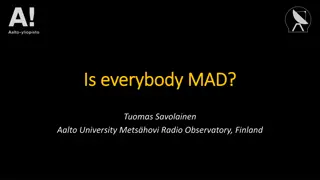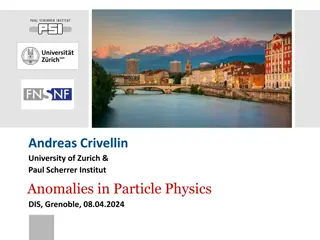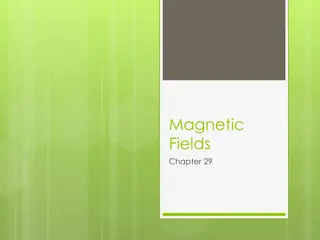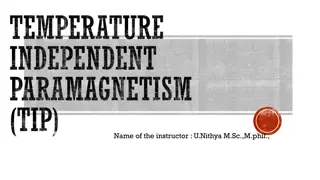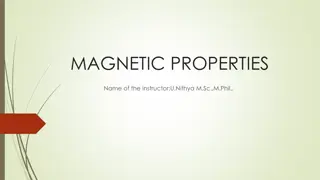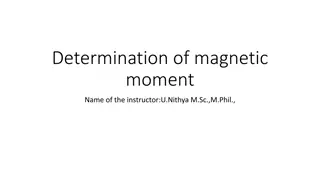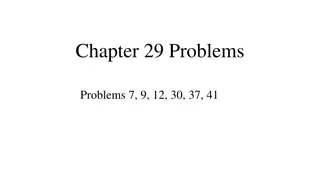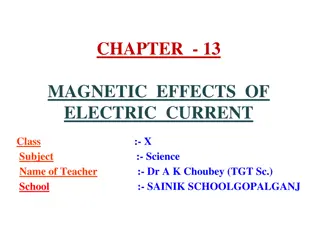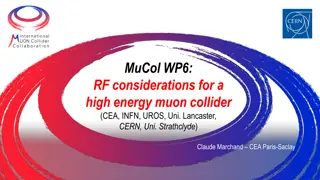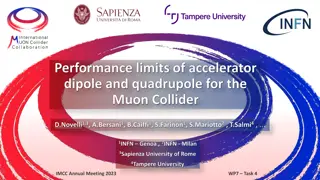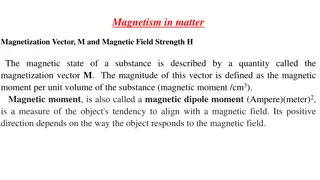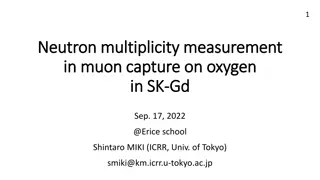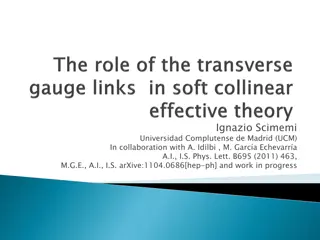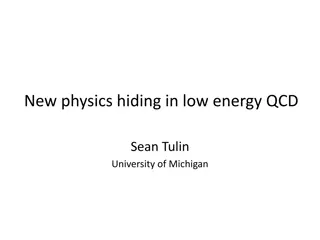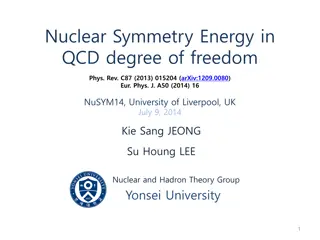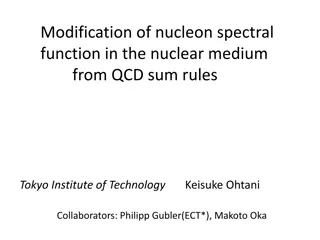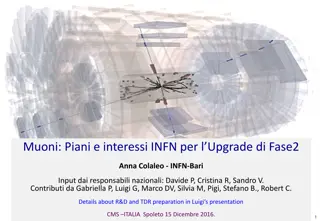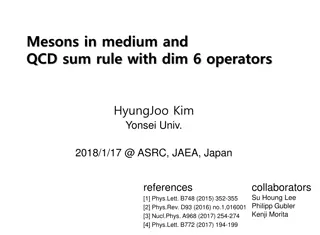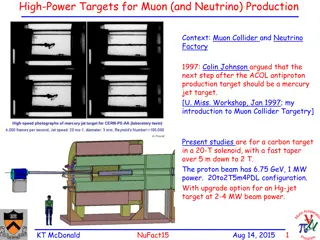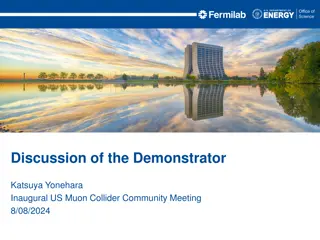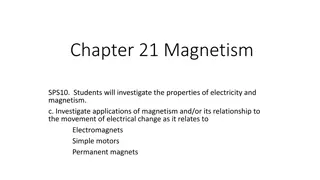QCD Effects in the Muon Anomalous Magnetic Moment
Muon's magnetic moment and anomalous g-2, quantum effects, experimental studies at BNL, Fermilab, JPARC. Hadronic Vacuum Polarization, quark properties, Dyson-Schwinger Equation, Bethe-Salpeter Equations discussed with visual aids.
Download Presentation

Please find below an Image/Link to download the presentation.
The content on the website is provided AS IS for your information and personal use only. It may not be sold, licensed, or shared on other websites without obtaining consent from the author.If you encounter any issues during the download, it is possible that the publisher has removed the file from their server.
You are allowed to download the files provided on this website for personal or commercial use, subject to the condition that they are used lawfully. All files are the property of their respective owners.
The content on the website is provided AS IS for your information and personal use only. It may not be sold, licensed, or shared on other websites without obtaining consent from the author.
E N D
Presentation Transcript
The total free energy of a magnetic substance LL8 Section 32
1. The work done on a dielectric by the electric field when charges and temperature are constant is The work done on a magnetizable body by the magnetic field for constant currents and temperature is Magnetizable body Magnetic field
Magnetizable body Magnetic field The thermodynamic potential with respect to T and j is For constant T and j, irreversible processes occur until is minimized. In equilibrium in state occurring at constant T and j. is a minimum with respect to changes For given j and constant T, the change in is the work done by the field on the body.
2. The part of the free energy that depends on the thermodynamic state and properties of the body alone. In the absence of the body, the free energy density of the field is is the magnetic field produced by the given j without contribution from the magnetized body. Thing to remember: H is not the same as , but for non-ferromagnetic bodies, they are often almost the same.
With the body present, includes the energy of , Field part of the energy density, which includes the contribution from M Free energy density of body without field. New definition The difference in old and new definitions does not affect the differential thermodynamic relations of the body.
3. Change in free energy due to infinitesimal change in magnetic field. For a reversible change in at constant T
4. After completing derivation in the HW Change in the original external field that created M Magnetization of the body Compare to (11.3):
For a uniform external applied magnetic field is also uniform comes out of integral Total magnetic moment of the body When temperature is not constant
5. Formulas analogous to those for dielectrics (section 11) For linear media, with B = H Absolute, not differential (if the externally applied field is homogeneous) If the function B(H) is arbitrary (not linear), then
6. Common case of small magnetic susceptibility (diamagnetic and paramagnetic) Usually the magnetic susceptibility is small for non ferromagnetic bodies, so that their magnetization does not affect the currents that create the field that magnetizes the body. Then the free energy is linearly proportional to the susceptibility. This is found from the original current distribution (e.g. an electromagnet) without any magnetizable material around.
7. 8. Reason magnetic susceptibility can be positive or negative: QM 9. Sign of force on paramagnetic and diamagnetic bodies
